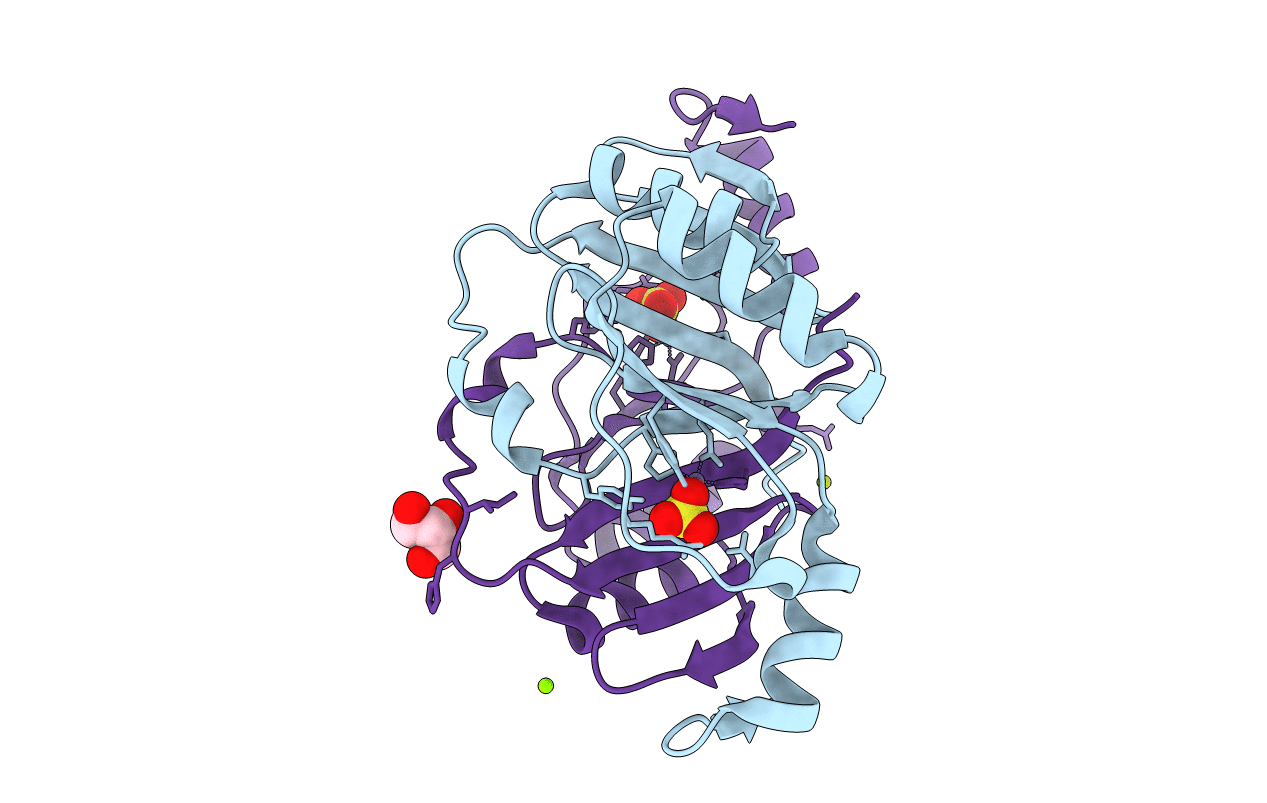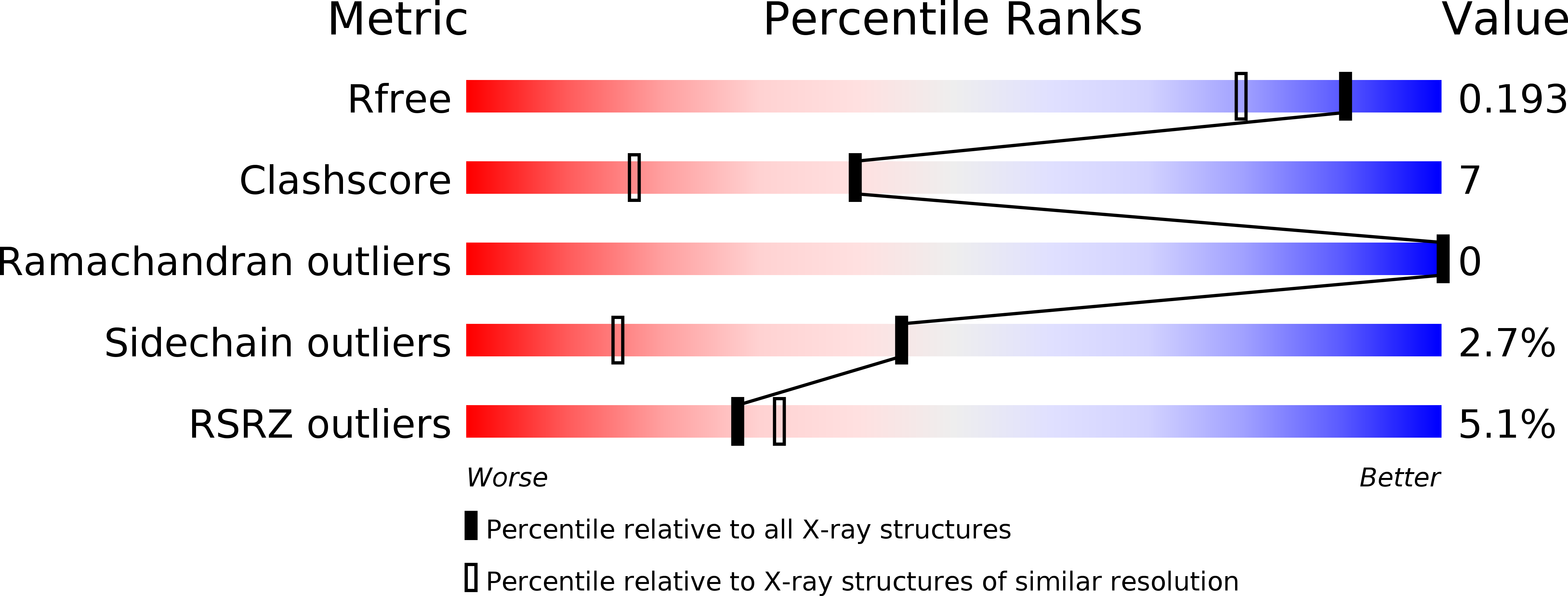
Deposition Date
2013-03-04
Release Date
2013-10-02
Last Version Date
2024-02-28
Entry Detail
PDB ID:
4JH1
Keywords:
Title:
Crystal Structure of FosB from Bacillus cereus with Zinc and Sulfate at 1.55 A Resolution -SAD Phasing
Biological Source:
Source Organism:
Bacillus cereus (Taxon ID: 222523)
Host Organism:
Method Details:
Experimental Method:
Resolution:
1.55 Å
R-Value Free:
0.18
R-Value Work:
0.13
R-Value Observed:
0.13
Space Group:
P 21 21 21


